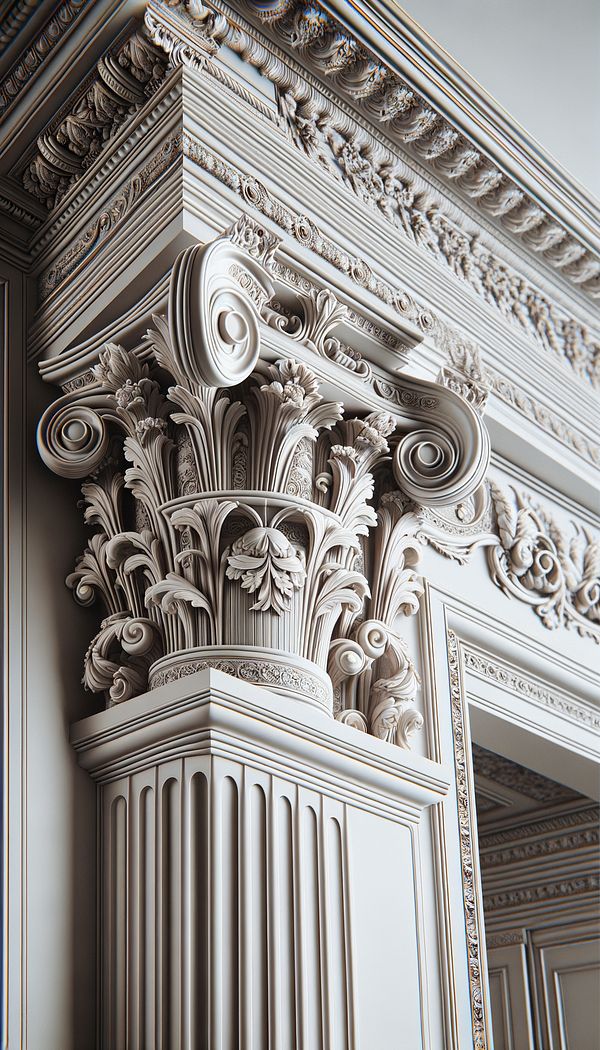What is a Pilaster?
A pilaster is a rectangular column that projects partially from the wall to which it is attached.
Description
A pilaster is an architectural element commonly found in both classical and neoclassical buildings. It is designed to give the appearance of a supporting column and serves both decorative and structural purposes. Unlike freestanding columns, pilasters are partially embedded into the wall, projecting only slightly from it. This creates a relief effect that can add depth and sophistication to a facade or interior space.
Pilasters often mimic the style and proportions of classical columns, including features such as bases, shafts, and capitals. They can vary in design, from simplistic forms to highly ornate versions embellished with carving and moldings. While pilasters might look like they bear the weight of the structure, they are typically not load-bearing in modern buildings. Instead, their use is primarily aesthetic, adding a sense of grandeur and architectural interest to a space.
In interior design, pilasters can be used to frame doorways, windows, or fireplaces, and to create a rhythm along a wall. They can also be used to divide a large room into sections without interrupting the visual flow. This versatility makes them a favored element in various design styles, including classic, baroque, and even contemporary spaces.
Usage
In a Baroque-style living room, pilasters might flank a grand fireplace, adding to the opulence and detailed craftsmanship of the space. In a modern office building, minimalistic pilasters could be used along a corridor to add an element of architectural interest without overwhelming the sleek design. Pilasters are also commonly found in the exterior architecture of neoclassical buildings, where they contribute to the symmetry and grandeur typical of the style.
FAQs
-
Are pilasters always decorative, or can they be functional?
While pilasters are primarily decorative, especially in modern construction, they can also serve functional purposes in some cases. For example, they can help reinforce a wall or divide space architecturally without blocking light or sightlines.
-
Can pilasters be used in contemporary design?
Yes, pilasters can be used in contemporary design settings. While they are traditionally associated with classical architecture, modern adaptations often feature simplified forms and minimal detailing, allowing them to blend seamlessly into more contemporary aesthetics.
-
What materials are pilasters made from?
Pilasters can be crafted from a variety of materials including stone, plaster, wood, or even molded concrete. The choice of material often depends on the overall design aesthetic and the architectural requirements of the building.
Practical Application
When incorporating pilasters into your design, consider the overall aesthetic of the space and the function the pilasters will serve. For classical or traditional settings, opt for pilasters with ornate detailing that complement the architecture. In contemporary spaces, look for simpler, sleek designs. The key is to ensure the pilasters harmonize with the surrounding elements and contribute to the cohesiveness of the design. Always be mindful of scale and proportion to avoid overwhelming the space.
-
Architectural Elements199 articles
-
Design Styles478 articles
-
Wall Treatments & Finishes157 articles
-
Persian RugA Persian rug is a handwoven carpet from Iran, known for its intricate designs and high quality.
-
PigmentPigment is a colored material that is used to add color to other materials.
-
Log FurnitureLog furniture is furniture made from whole or partially whole logs.
-
Builder, Custom HomeA custom home builder is a professional responsible for the construction of personalized homes according to specific client requirements.
-
ColonnadeA series of columns supporting a roof or entablature.
